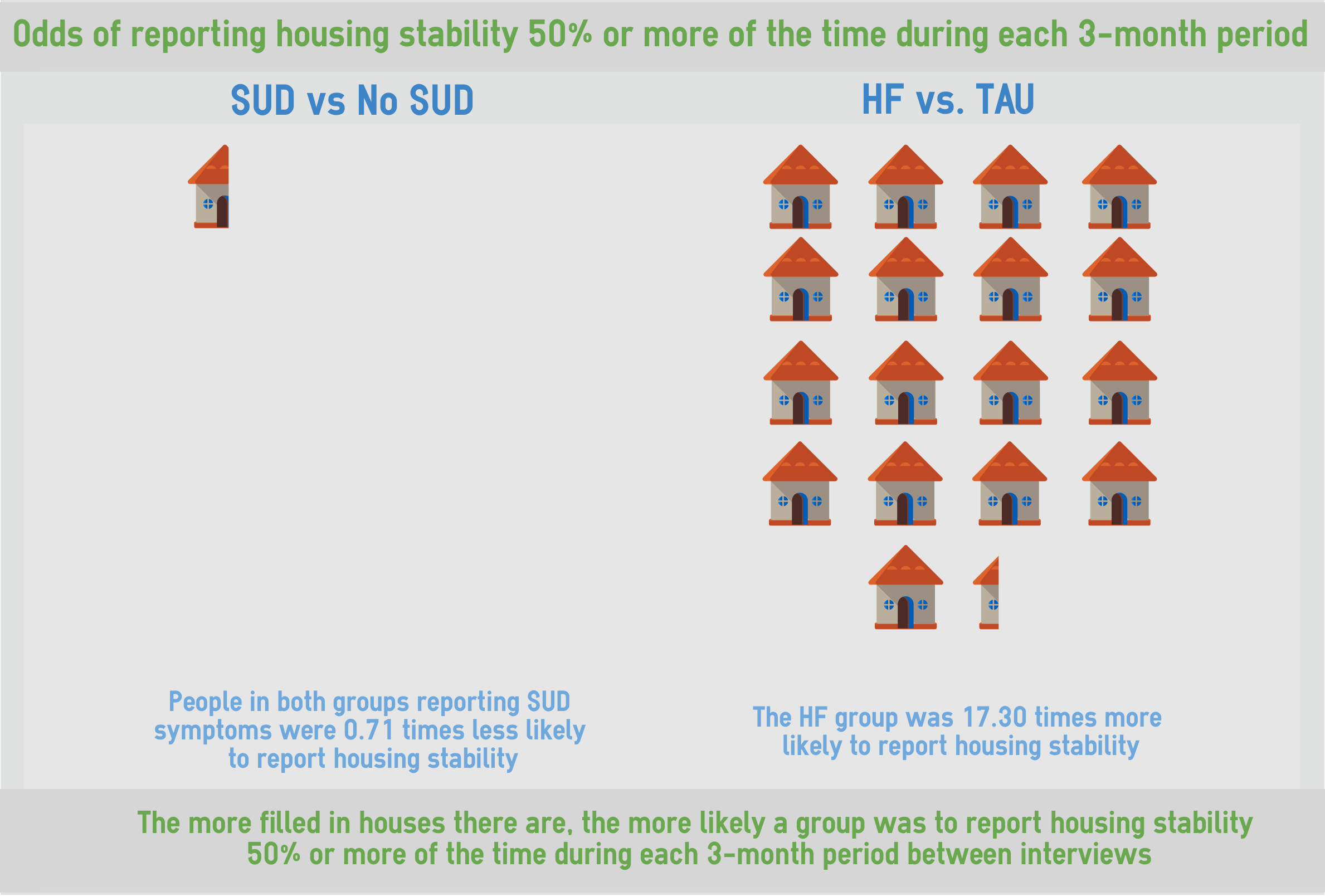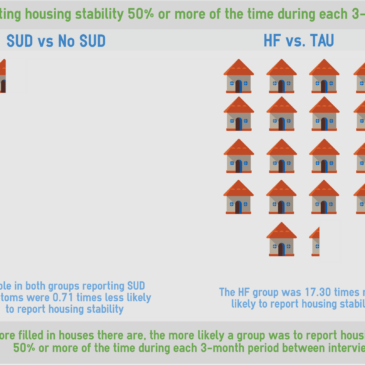A recent BASIS op-ed by James O’Connell, MD outlines the challenges associated with treating substance use disorders (SUD) among people experiencing homelessness. One approach to reducing homelessness is Housing First, which offers free housing to people experiencing homelessness without requiring abstinence from substance use. These programs are shown to reduce emergency room use and hospitalizations associated with homelessness. This week, as part of our Special Series on Addiction and Homelessness, STASH reviews a study by Karen Urbanoski and her colleagues that explores how SUD relates to the effectiveness of Housing First programs.
What is the research question?
Does substance use disorder relate to Housing First program outcomes in mental health, housing stability, and community functioning?
What did the researchers do?
The researchers recruited 2,255 participants from homeless shelters, hospitals, and other social service agencies. All participants were 18-years-old or older, reported a mental health disorder, and reported homelessness. Participants were randomly assigned into one of two housing programs: Housing First (HF) and Treatment as Usual (TAU). Participants were interviewed at baseline and every 6 months for approximately two years. At each interval, participants were assessed for past-month SUD, housing stability, community functioning (e.g., social skills and behavior), general quality of life, and mental health symptom severity. Participants were also interviewed every 3 months to collect recent housing history. The researchers used mixed-effects models to assess the relationship between SUD and the effectiveness of HF programs.
What did they find?
Participants with SUD in both groups reported less housing stability than those without SUD. Participants in the HF group were 17 times more likely than those in the TAU group to report sustained housing and higher scores on community functioning. (See Figure 1). Compared to their baseline scores, all participants reported less mental health symptoms, higher community functioning, higher general quality of life, and higher health-related quality of life.

Figure. Odds of reporting housing stability by treatment group and substance use disorder status. Note. Houses represent the odds ratio. Both comparisons represent statistically significant results. Click image to enlarge.
Why do these findings matter?
Community integration is complex. People experiencing homelessness face countless barriers during the transition away from an impermanent style of living. Among these barriers are access to housing, mental health disorders, and substance use disorders. The effectiveness of HF programs for housing stability and community functioning for both people with SUD and people without SUD demonstrates that SUD treatment might not be a necessary first step to encourage community integration.
Every study has limitations. What were the limitations in this study?
Participant utilization of treatment services was not assessed in this study and might have influenced the results. A follow-up study might find that freedom to choose treatment services outside of the housing program is a better predictor of housing stability or community functioning. This study relied on self-reports. Self-report might be inaccurate due to incorrect memory recall or unwillingness to tell the truth.
For more information:
The US Department of Housing and Urban Development offers a list of resources and services for people experiencing or at risk of homelessness.
The BASIS Addiction Resources offers a variety of tools and screens for people experiencing or at risk of substance use disorder or gambling disorder.
— Pat Williams
What do you think? Please use the comment link below to provide feedback on this article.





Regina July 3, 2019
Great and informative research post on housing stability. From your research there is need to promote housing stability.
Thanks for sharing.